First of all, yes, wallabies do roam wild in Sydney, Australia’s largest city. However, you need to look for them in the right places and at the right times. Since moving here, we’ve spotted quite a few, and in this post, I’m sharing not only the best locations but also other essential tips to help you see them too.
Are wallabies small kangaroos?
If you’re an Aussie, you might want to skip this paragraph. But everyone else I’ve ever spoken to had no idea what wallabies were. So, in case you’re wondering—wallabies are not kangaroos, though they do look similar.
If you’ve never seen a wallaby before, you’d probably mistake it for a small kangaroo. Both are marsupials with larger hind legs than forelimbs, large hind feet, long muscular tails for balance, and forward-opening pouches.
The most obvious difference between kangaroos and wallabies is their size. Kangaroos are much larger, growing up to 2 meters tall and weighing over 90 kg. Wallabies, on the other hand, rarely exceed 20 kg or reach 1 meter in height. However, there are many species of both, and their sizes vary. (Side note: Yes, Australia is full of cute marsupials—along with the snakes and spiders!)
If you take a closer look, you’ll notice other differences between the two. These include their body shape (wallabies have more compact legs), natural habitat (kangaroos prefer grassy plains, while wallabies are more common in forests or around rocky escarpments), and coat color (kangaroos have a uniform coat, while wallabies often have two or three colors in their fur).
And here are two of my close portraits of them to illustrate the difference:
Note: I’m using my own pictures of wallabies in this post, but they weren’t necessarily taken during these particular walks. I don’t carry my camera with me all the time, and my phone isn’t great for zooming. However, I’ve indicated the location for each photo, just for the record.
The most essential tip for seeing wallabies: timing
Well, the most obvious tip is not to look for them in Sydney’s CBD—but that goes without saying! The real key is choosing the right time of day. Wallabies (and kangaroos) are most active at night, as well as during dusk and dawn.
During the day, they rest and sleep, often lying motionless under dense bush. On cooler days, they might be slightly more active, but your best chance of spotting them is early in the morning or late in the evening.
I know you’re eager to find out where to see them, and I’m about to tell you—but keep in mind that timing is crucial. If you visit these parks in the middle of a hot summer day, you might not spot any wallabies. However, if you wait until later, your chances improve significantly.
That said, don’t expect to see flocks of wallabies. Unlike kangaroos, wallabies are usually solitary and much shyer. Keep your distance, stay quiet, and avoid sudden movements. And please, don’t feed them—human food can harm their digestive system.
The best places to spot wild wallabies in Sydney
Though I can’t guarantee wildlife sightings, I’ve visited these parks many times over the years and have spotted wallabies almost every time!
Dobroyd Head, Sydney Harbour National Park
Dobroyd Head is a picturesque headland on Sydney’s North Shore, home to a wild, protected coastal heathland and forming part of Sydney Harbour National Park. Whether or not you spot wallabies, this scenic coastal hike is sure to impress, offering breathtaking views over Sydney Harbour and Manly.
I usually park on Beatty Street or the surrounding residential streets, where unrestricted parking is easy to find. Alternatively, you can park near Tania Park, though it tends to be busier. Starting from Tania Park means beginning with the highlights—the two lookouts at the top—whereas I prefer Beatty Street, a quiet dead-end street that seamlessly transitions into a coastal forest walking track.
This section of the track offers the best chance to spot a wallaby. You can either take the lower pathway or follow the parallel track through the forest—I’ve seen wallabies in both areas. I usually do this as a loop, saving the forest path for the return journey.
The coastal trail, which is also part of the Manly to Spit Bridge Walk, passes by Reef Beach—a small, sheltered sandy cove that makes for a great swimming stop in warmer months. From there, the trail gradually ascends to the Dobroyd Head lookout, perched dramatically at the edge of towering coastal cliffs. The lookout is fenced for safety and offers incredible views.
If you’re short on time, you can turn back from Dobroyd Head lookout, but I highly recommend continuing. While wallaby sightings are unlikely on the steep climb ahead, the trail leads to several more spectacular viewpoints that make the effort worthwhile.
Dobroyd Head walk summary:
- Parking: street parking on Beatty Street or around Tania Park
- Trailhead: the dead end of Beatty Street, Arabanoo Lookout or Crater Cove Lookout
- Length: 3.4 km loop
- See it on a map here.
Flint and Steel Beach Track, Ku-ring-gai Chase National Park
Flint and Steel Beach is one of my favorite wild beaches in Sydney. It’s sheltered enough to be safe for swimming, surrounded by lush green eucalyptus forest, and features cool rock pools to explore at low tide on both ends of the beach. Plus, you’re likely to encounter resident wallabies either behind the beach or along the walking track.
Because reaching the beach requires a 1 km walk, which involves a steep downhill path with plenty of stairs. The path winds through a beautiful forest, mostly eucalyptus, but my favorite section is a lush green grove of cabbage palms. From time to time, you can catch a glimpse of Broken Bay through the dense vegetation.
There are no facilities at this beach, so you’ll need to bring everything with you—plenty of water included—and carry it back up afterward. But it’s wild in every sense! We often spot a wallaby or two in the dense bush behind the beach, and once, a brave little one even ventured out onto the sand.
Flint And Steel walking track summary:
- Parking & trailhead: Flint And Steel Beach parking along West Head Road
- Length: 2 km return
- See it on a map here.
Also, this track is not the only one where you have good chances to spot a wallaby. They live everywhere in Ku-ring-gai Chase National Park, and I saw them along Elvina Track, Towlers Bay circuit and the Resolute Beach circuit. And, of course, at the Basin Beach campground (read on to learn more). Find more details about the Ku-ring-gai Chase walks in this post.
Basin Beach Track, Ku-ring-gai Chase National Park
There’s another famous spot to see wild wallabies in Ku-ring-gai Chase National Park: the Basin Beach campground. This is arguably the best family-friendly beachfront campground in Australia—it’s right on Sydney’s doorstep, accessible by ferry, and offers excellent amenities, including toilets, showers, picnic shelters, benches, BBQs, and even coffee and ice cream vending machines. The sheltered beaches have calm, shallow waters and plenty of natural shade under large evergreen trees. Oh, and let’s not forget the resident wallabies!
You don’t have to camp here to enjoy it. Simply take the ferry or walk down from West Head Road and spend the day on the beach. You’re almost guaranteed to spot a wallaby at any time of the day (look under the shady trees during the heat of the afternoon), but they’re most active in the early morning and late afternoon, when you might see five to ten hopping around the grassy flats of the Basin.
Should you walk or take the ferry? It’s up to you. The ferry departs from Palm Beach, making it an easy connection from the Northern Beaches. The walk down follows a wide fire trail—not the most scenic in the park, but straightforward, relatively short, and partly shaded. Keep in mind that there’s about 160 meters of elevation change, so it’s not a flat stroll. Proper walking shoes are recommended—leave the flip-flops at home. Bonus: you might spot even more wallabies along the way! And in spring, Ku-ring-gai Chase transforms into a stunning natural flower garden.
mum and her little joey right behind Basin Beach
Basin walking track summary:
- Parking & trailhead: Basin Track parking along West Head Road
- Length: 2.8 km one-way
- See it on a map here.
Davidson Park, Garigal National Park
While Davidson Park is located beneath the busy Roseville Bridge, it feels like a world away from the hustle and bustle of Sydney once you’re there. You can enjoy a picnic in the shade of eucalyptus trees, play on the open grassy lawn, have a BBQ (of course), launch your canoe to explore Middle Harbour Creek, or take a creekside walk along the Lyrebird Track.
Lyrebird track summary:
- Parking & trailhead: west of Davidson Park picnic area
- Length: 2.7 km one-way
- See it on a map here.
As for the wallabies? They’re easy to spot, as they love the Davidson Park picnic area. Most often, we’ve seen them at dusk near the canoe ramp and on the western side of the large picnic grounds.
Where else to see wild wallabies in Sydney?
Of course, these three parks aren’t the only places to have a wallaby encounter, but they’re where I’ve been lucky enough to see them most often. Here are a few other good spots:
- Other headlands of the Sydney Harbour National Park, like Bradleys Head or Manly North Head
- Blue Gum track in Hornsby
- Forest walks in Berowra Valley National Park and Garigal National Park
- Tracks and picnic areas in Lane Cove National Park
Want amazing Sydney family walks without the planning headache?
My ebook features 50 detailed, kid-approved trails with maps, parking, pram info & fun “Play Factor” highlights. PLUS: 130+ nature play ideas & printables to get your family outdoors!
Spend less time searching, more time exploring. Get your instant download!
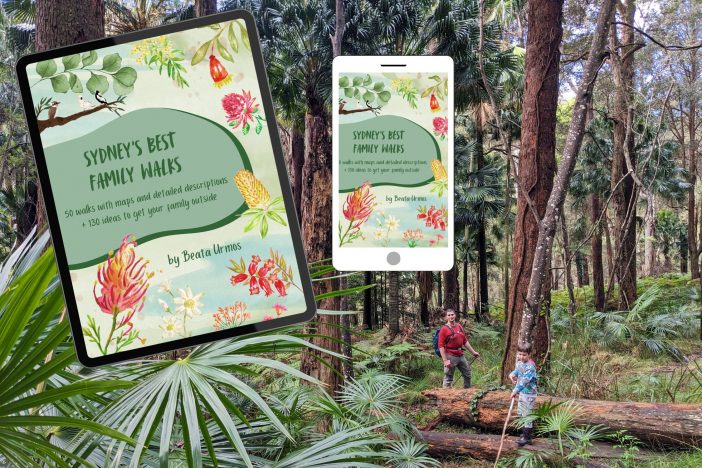
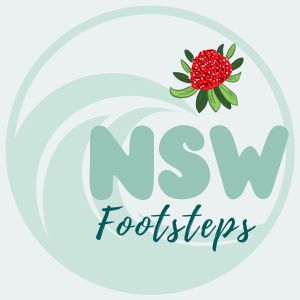
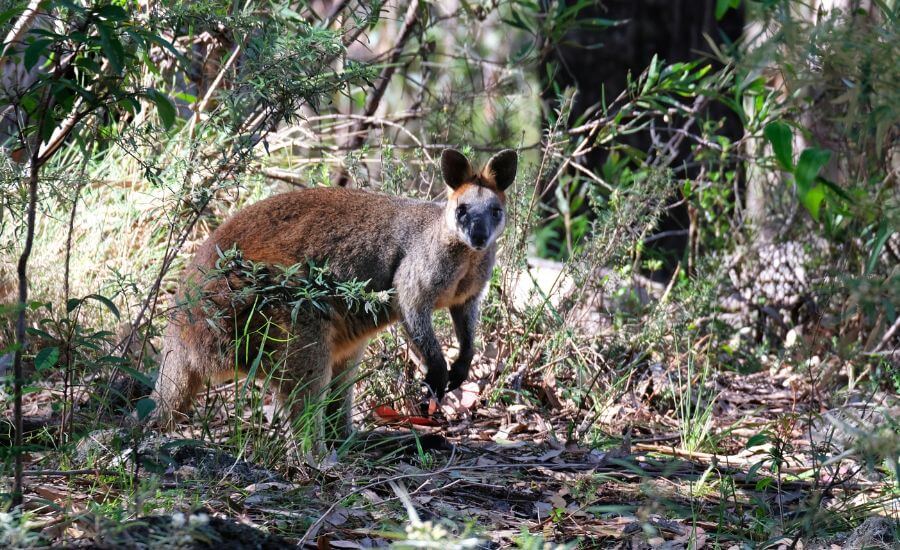













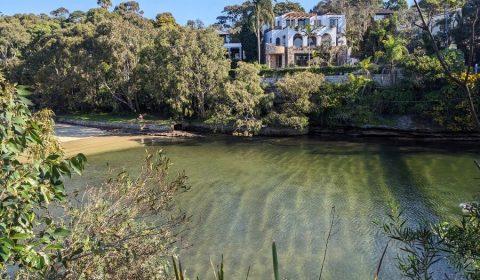
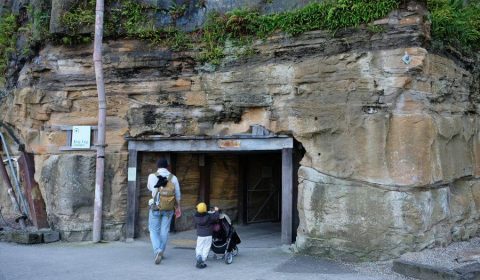
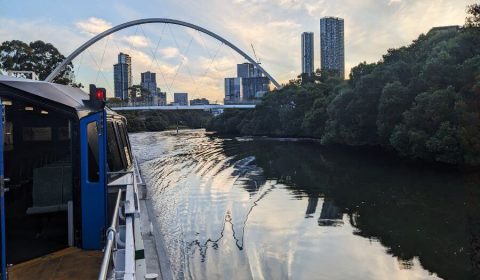
Leave a Reply